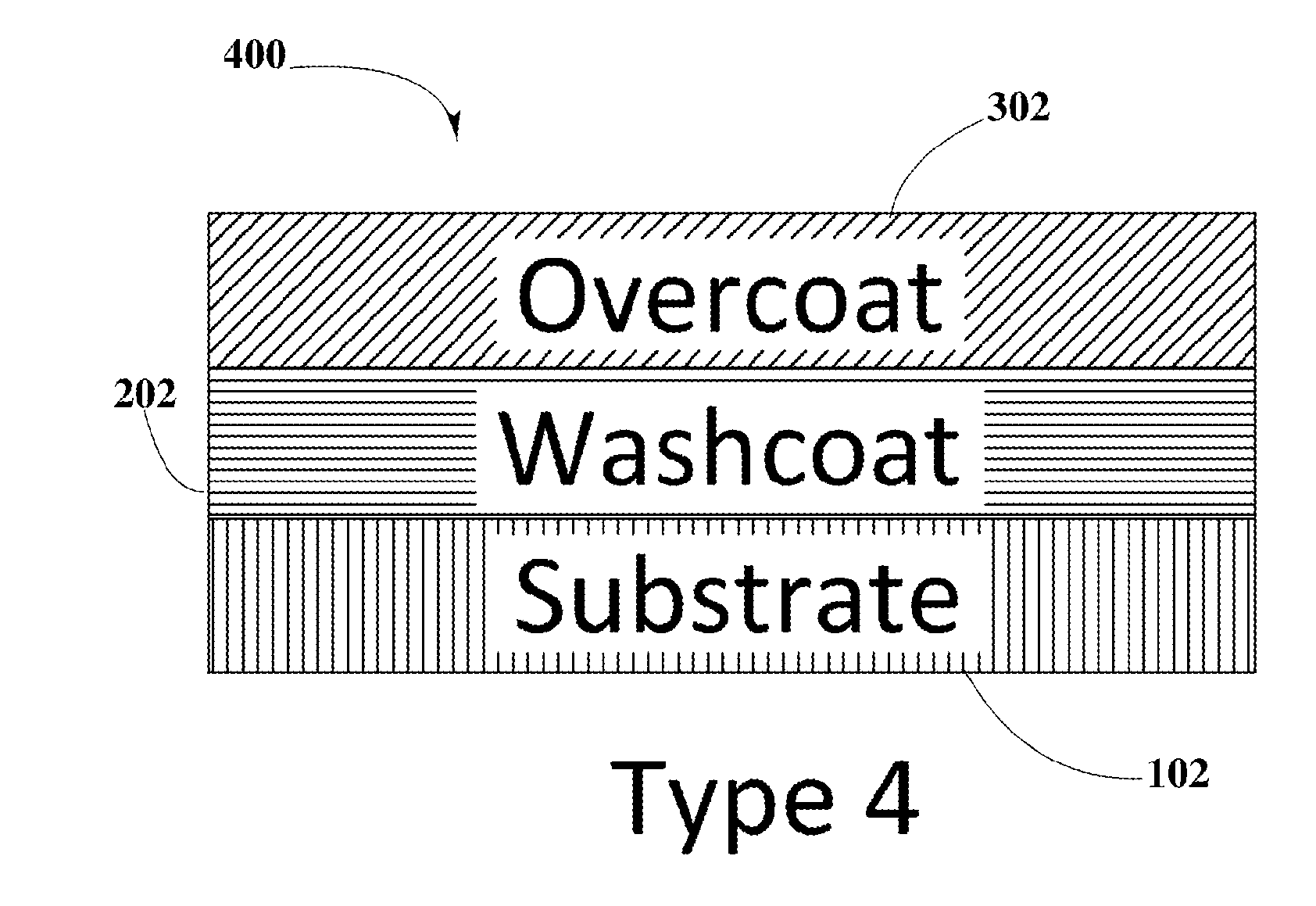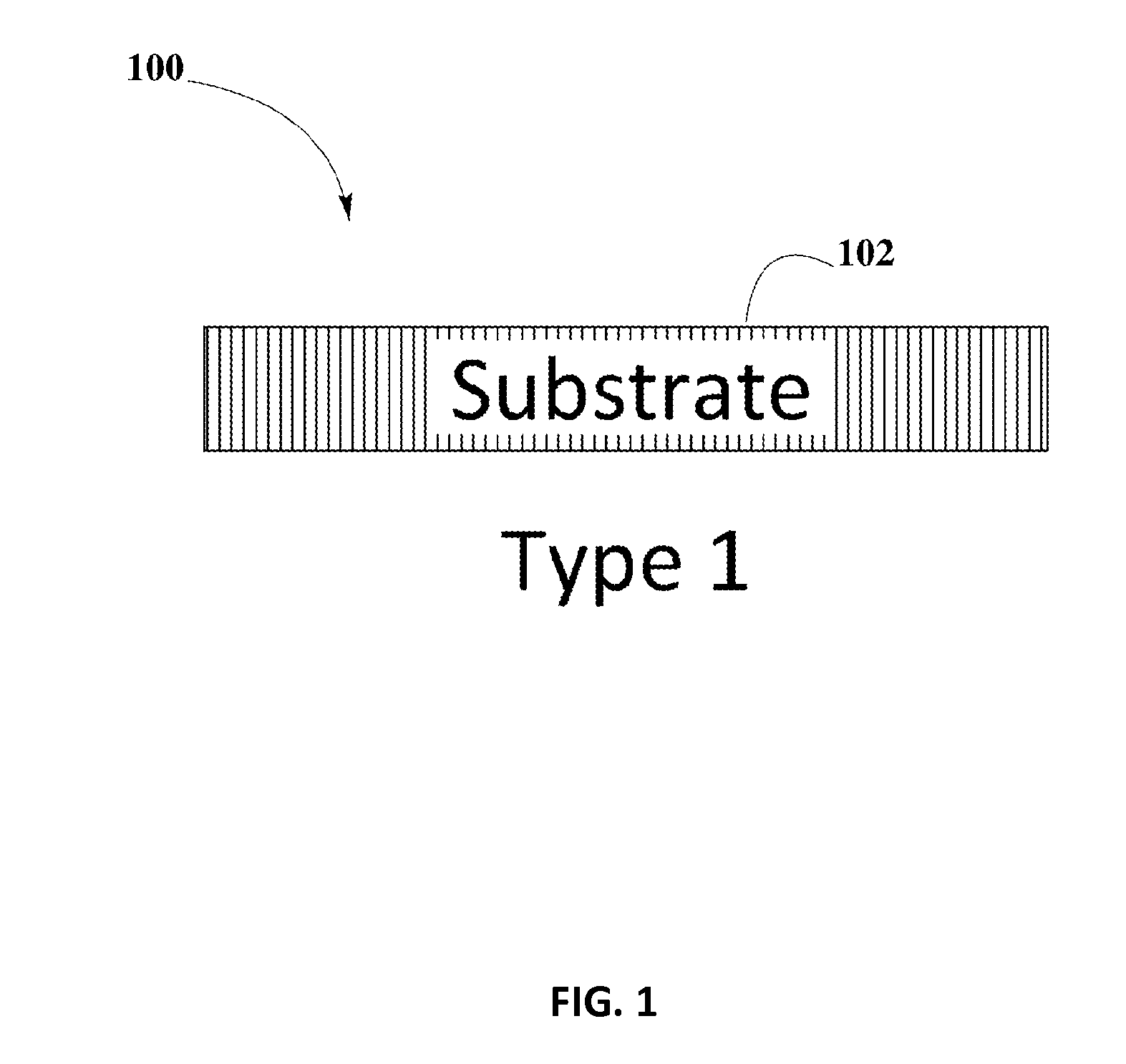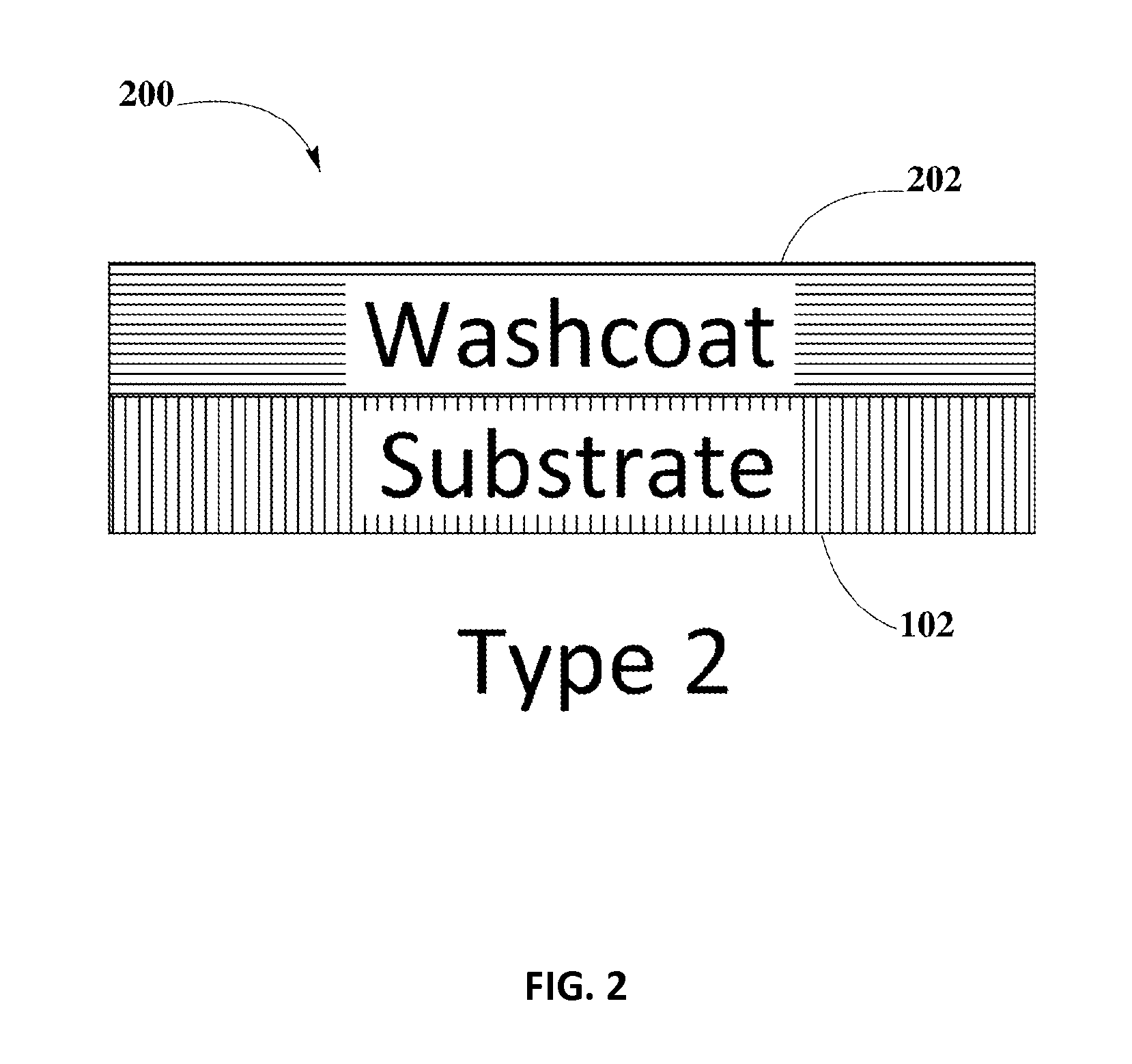Methods for Identification of Materials Causing Corrosion on Metallic Substrates within ZPGM Catalyst Systems
a technology of metallic substrates and catalyst systems, applied in chemical methods analysis, material analysis using wave/particle radiation, instruments, etc., can solve problems such as catalyst system presence of corrosion, and achieve the effect of improving catalytic performan
- Summary
- Abstract
- Description
- Claims
- Application Information
AI Technical Summary
Benefits of technology
Problems solved by technology
Method used
Image
Examples
Embodiment Construction
[0028]In the following detailed description, reference is made to the accompanying drawings, which form a part hereof. In the drawings, which are not to scale or to proportion, similar symbols typically identify similar components, unless context dictates otherwise. The illustrative embodiments described in the detailed description, drawings and claims, are not meant to be limiting. Other embodiments may be used and / or and other changes may be made without departing from the spirit or scope of the present disclosure.
Definitions
[0029]As used here, the following terms may have the following definitions:
[0030]“Catalyst system” may refer to a system of at least two layers including at least one substrate, a washcoat, and / or an overcoat.
[0031]“Substrate” may refer to any material of any shape or configuration that yields a sufficient surface area for depositing a washcoat and / or overcoat.
[0032]“Washcoat” may refer to at least one coating including at least one oxide solid that may be dep...
PUM
 Login to View More
Login to View More Abstract
Description
Claims
Application Information
 Login to View More
Login to View More - R&D
- Intellectual Property
- Life Sciences
- Materials
- Tech Scout
- Unparalleled Data Quality
- Higher Quality Content
- 60% Fewer Hallucinations
Browse by: Latest US Patents, China's latest patents, Technical Efficacy Thesaurus, Application Domain, Technology Topic, Popular Technical Reports.
© 2025 PatSnap. All rights reserved.Legal|Privacy policy|Modern Slavery Act Transparency Statement|Sitemap|About US| Contact US: help@patsnap.com



